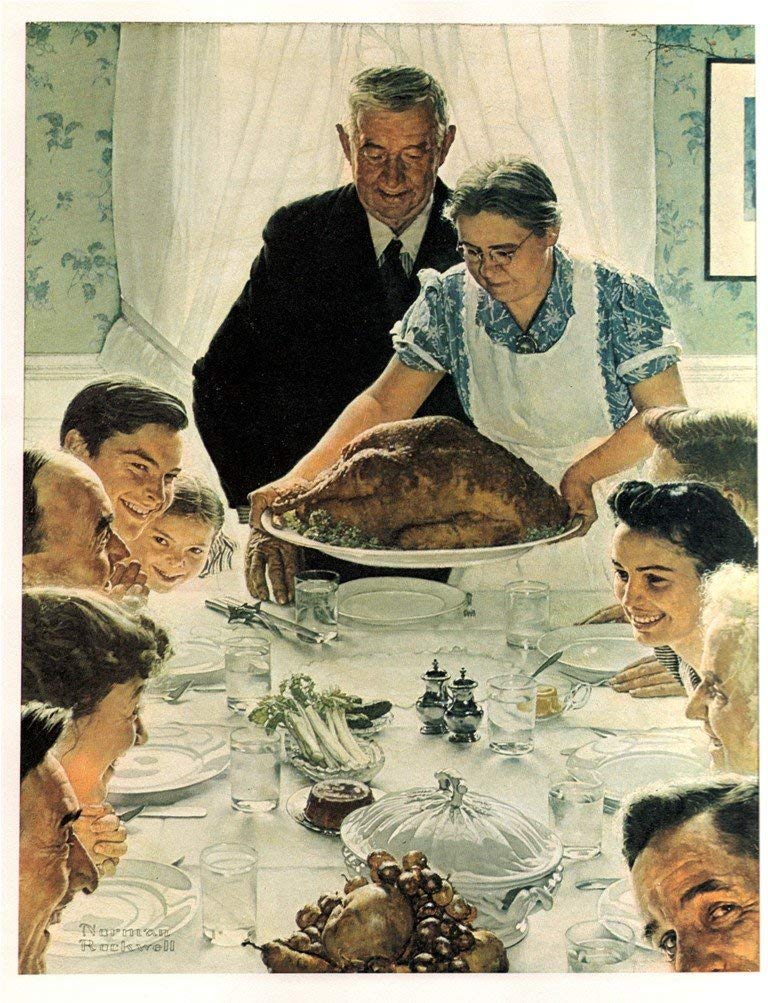My previous post “The Nuclear Option” introduced the subject of nuclear families via David Brooks’ Atlantic article “The Nuclear Family was a Mistake”. The title is provocative, especially to my tender Christian sensibilities. Despite its length, I persevered and read and re-read Brook’s article. I found it challenging in numerous ways and am continuing to ponder some of his ideas and conclusions.
Rather quickly, I received a welcomed rebuttal shared by a friend entitled “The Nuclear Family is Still Indispensable”.
In the process of digesting Brooks’ lengthy missive I was reminded how significant the idea of nuclear family is to Christians. In my experience, much of our teaching and preaching presumes a nuclear family as a natural consequence of the Gospel. I am confident of the preeminence of marriage and family, for humans, in God’s creation. I am not so confident that the nuclear family as it has come to be generally understood… “a two-parent nuclear family, with one or two kids, probably living in some detached family home on some suburban street.”… is not the best vision for Christian families.
From 1950 to 1965, divorce rates dropped, fertility rates rose, and the American nuclear family seemed to be in wonderful shape. And most people seemed prosperous and happy. In these years, a kind of cult formed around this type of family—what McCall’s, the leading women’s magazine of the day, called “togetherness.” Healthy people lived in two-parent families. In a 1957 survey, more than half of the respondents said that unmarried people were “sick,” “immoral,” or “neurotic.”
I believe much of the Christian perception of the ideal family is a nostalgic remembrance of the glory days of the nuclear family of 1950-1965. As one who is a product of that era, I am sympathetic. Despite all the positive qualities of the nuclear family, sadly they are no longer prevail in our society.
For that reason, I am concerned that, for Christians in particular, our nostalgic perception of the nuclear family is our reality. If that is the case, it has powerful implications for us as we struggle to be Kingdom of God in this world. If we are reacting to the world as we perceive it, not as it is, our voice will be incoherent to the world.
A Reality Check.
- By 1960, 77.5 percent of all children were living with their two parents, who were married, and apart from their extended family.
Today, only a minority of American households are traditional two-parent nuclear families and only one-third of American individuals live in this kind of family. That 1950–65 window was not normal. - In 1980, only 12 percent of Americans lived in multigenerational households. But the financial crisis of 2008 prompted a sharp rise in multigenerational homes. Today 20 percent of Americans—64 million people, an all-time high—live in multigenerational homes.
- In 2014, 35 percent of American men ages 18 to 34 lived with their parents.
- Today many American males spend the first 20 years of their life without a father and the next 15 without a spouse.
- Nearly half of black families are led by an unmarried single woman, compared with less than one-sixth of white families. (The high rate of black incarceration guarantees a shortage of available men to be husbands or caretakers of children.) According to census data from 2010, 25 percent of black women over 35 have never been married, compared with 8 percent of white women. Two-thirds of African American children lived in single-parent families in 2018, compared with a quarter of white children.
- In 1960, roughly 5 percent of children were born to unmarried women. Now about 40 percent are. The Pew Research Center reported that 11 percent of children lived apart from their father in 1960. In 2010, 27 percent did. Now about half of American children will spend their childhood with both biological parents. Twenty percent of young adults have no contact at all with their father
- Americans today have less family than ever before. From 1970 to 2012, the share of households consisting of married couples with kids has been cut in half. In 1960, according to census data, just 13 percent of all households were single-person households. In 2018, that figure was 28 percent. In 1850, 75 percent of Americans older than 65 lived with relatives; by 1990, only 18 percent did.
- Over the past two generations, people have spent less and less time in marriage—they are marrying later, if at all, and divorcing more. In 1950, 27 percent of marriages ended in divorce; today, about 45 percent do. In 1960, 72 percent of American adults were married. In 2017, nearly half of American adults were single. According to a 2014 report from the Urban Institute, roughly 90 percent of Baby Boomer women and 80 percent of Gen X women married by age 40, while only about 70 percent of late-Millennial women were expected to do so—the lowest rate in U.S. history. And while more than four-fifths of American adults in a 2019 Pew Research Center survey said that getting married is not essential to living a fulfilling life, it’s not just the institution of marriage they’re eschewing: In 2004, 33 percent of Americans ages 18 to 34 were living without a romantic partner, according to the General Social Survey; by 2018, that number was up to 51 percent.
- The two-parent family, meanwhile, is not about to go extinct. For many people, especially those with financial and social resources, it is a great way to live and raise children. But a new and more communal ethos is emerging, one that is consistent with 21st-century reality and 21st-century values.
If you have not read “The Nuclear Family was a Mistake” in its entirety, perhaps this post has encouraged you to do so. There are numerous questions to be addressed, not the least of which is: “If not the nuclear family, then what?”
It is my intention to address that question and others in future posts.
To be sure, the isolated nuclear family detached from all social support is simply not workable for most people.
The Nuclear Family is is Still Indispensable

